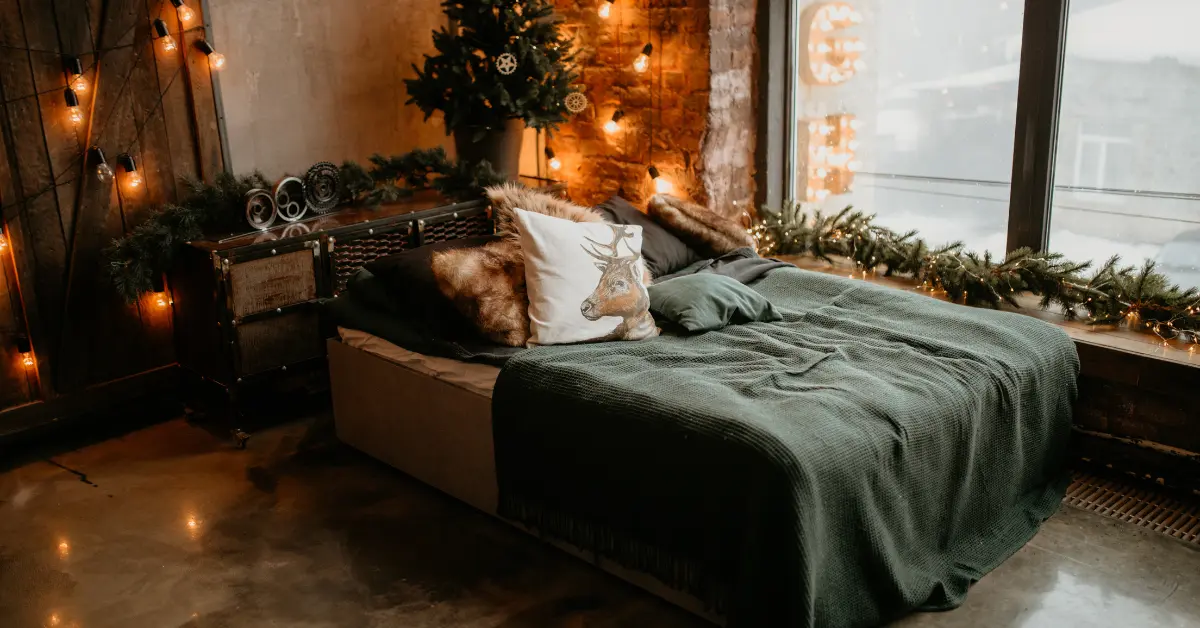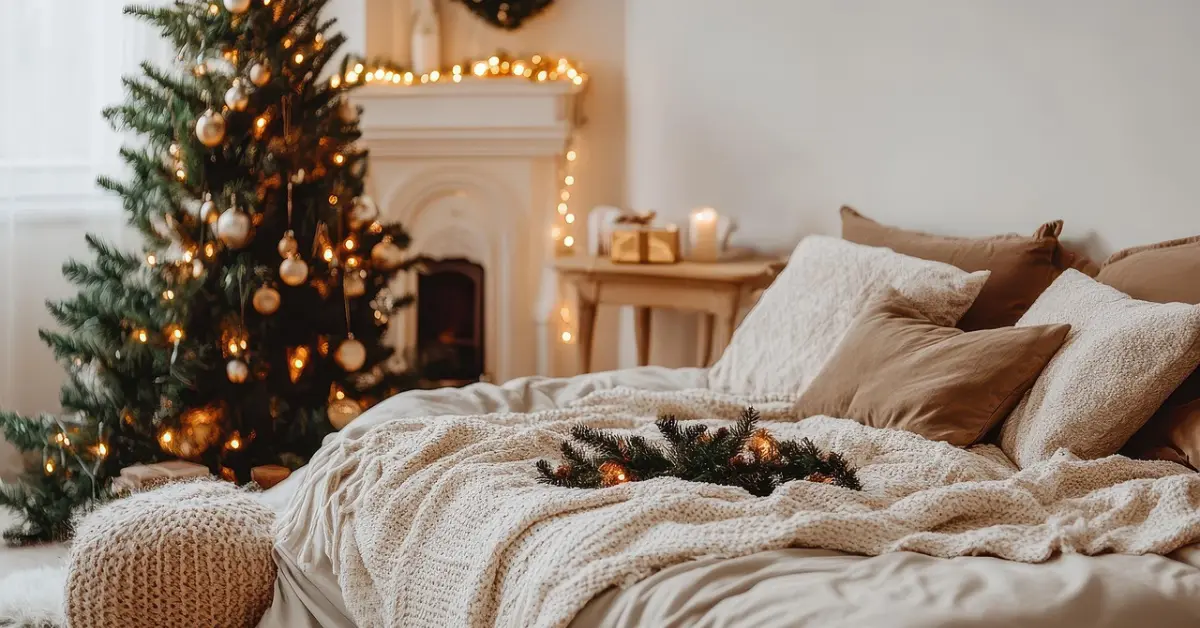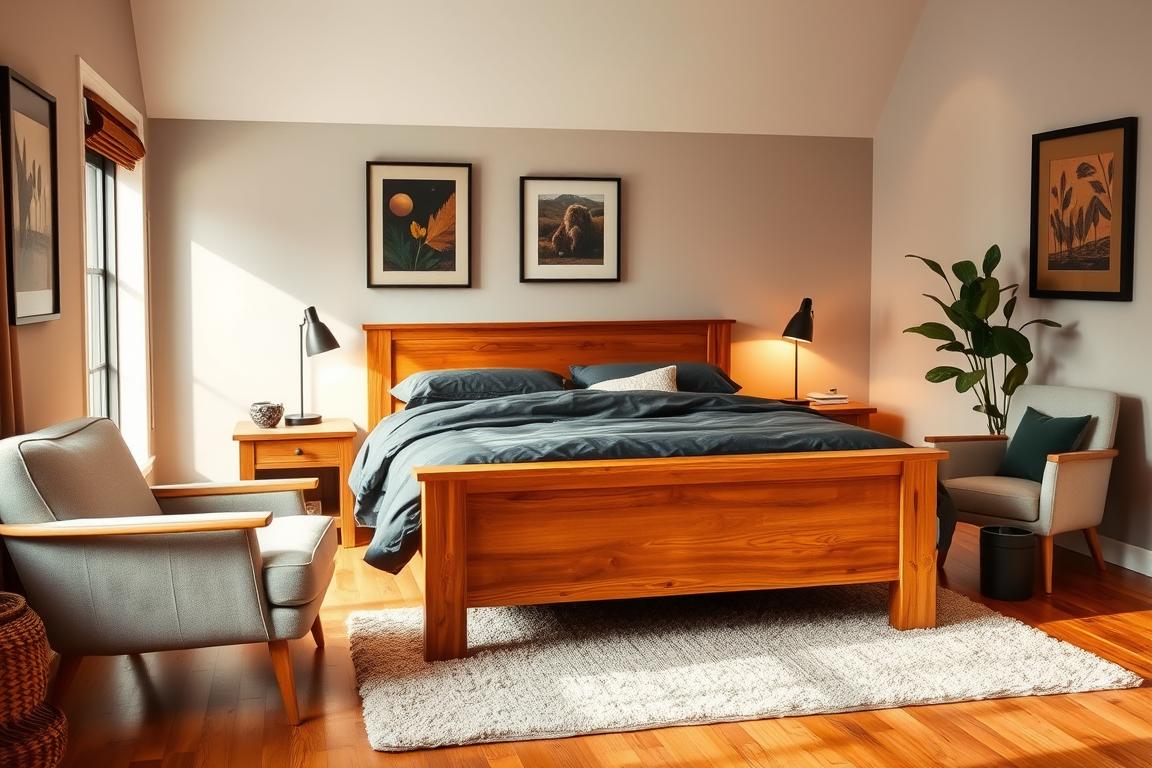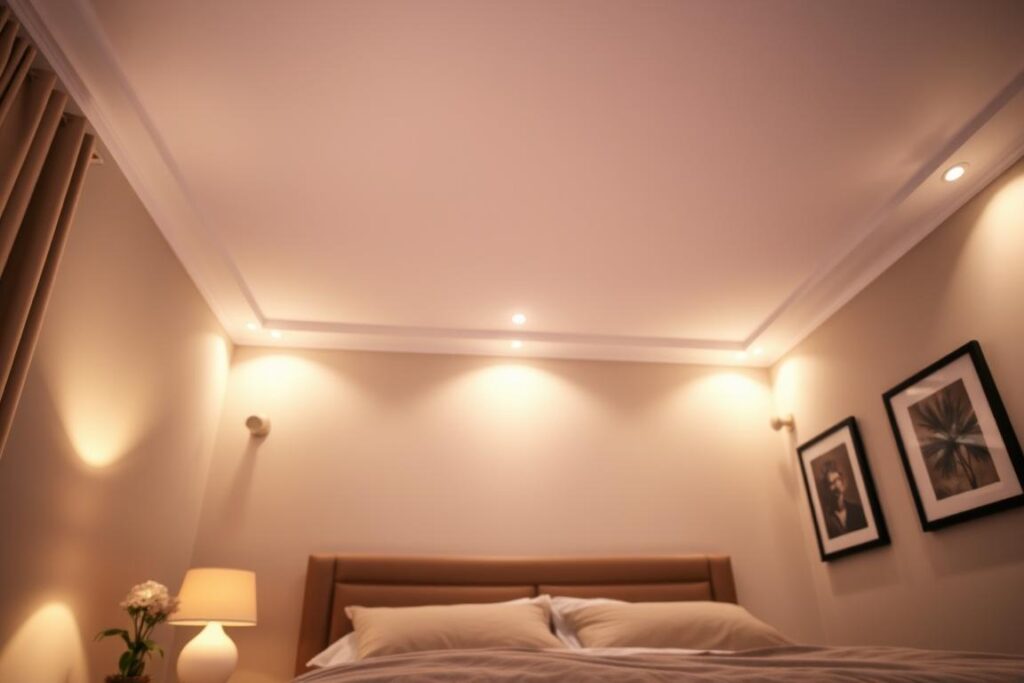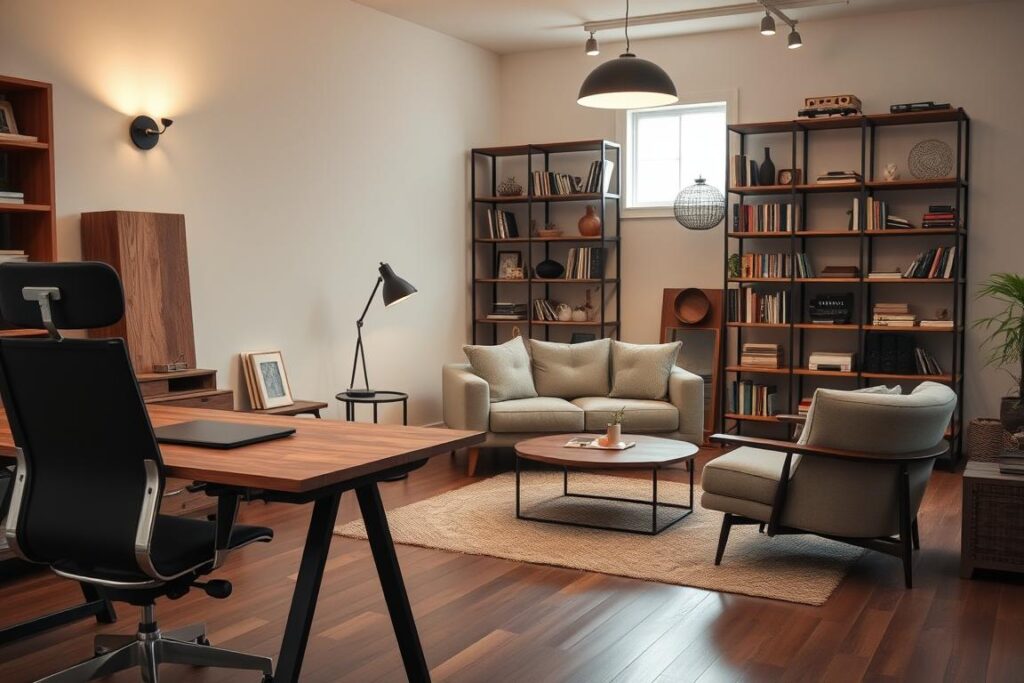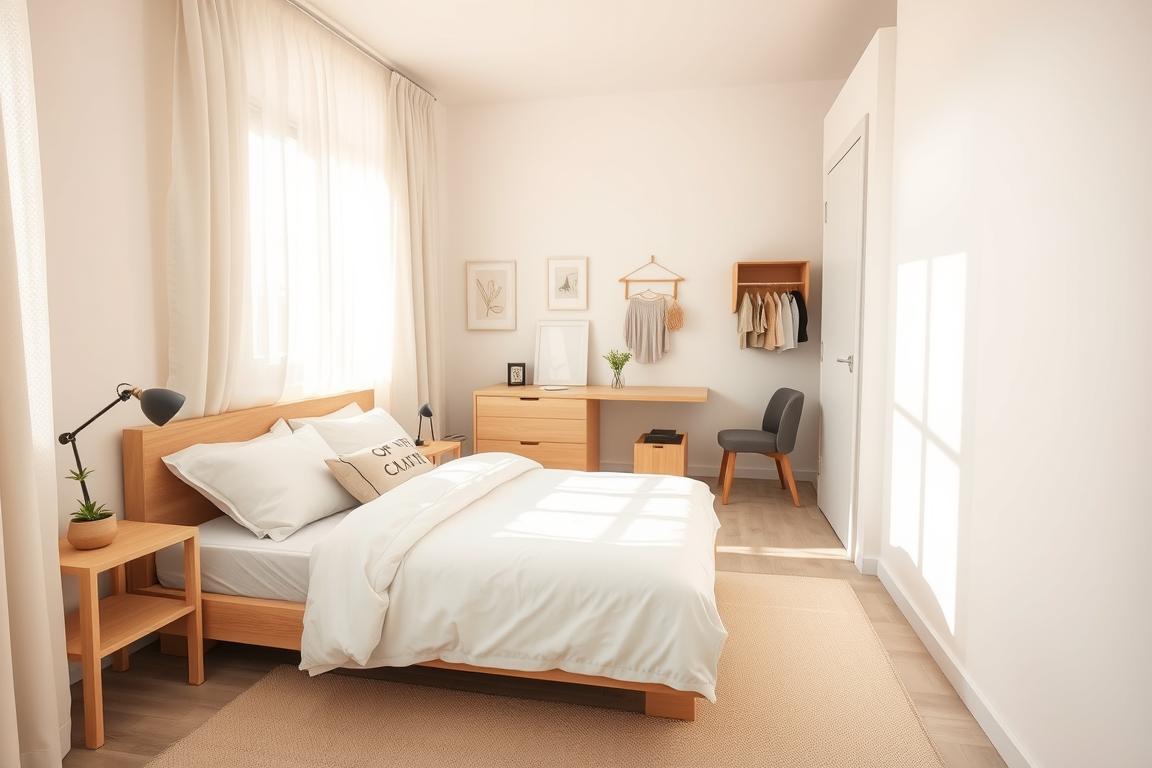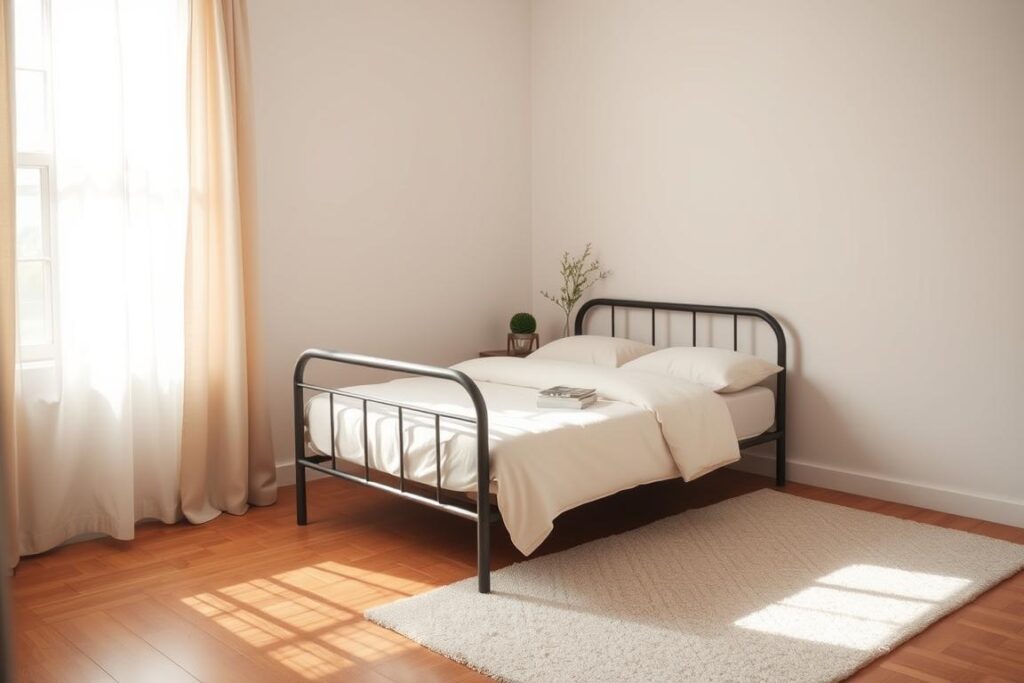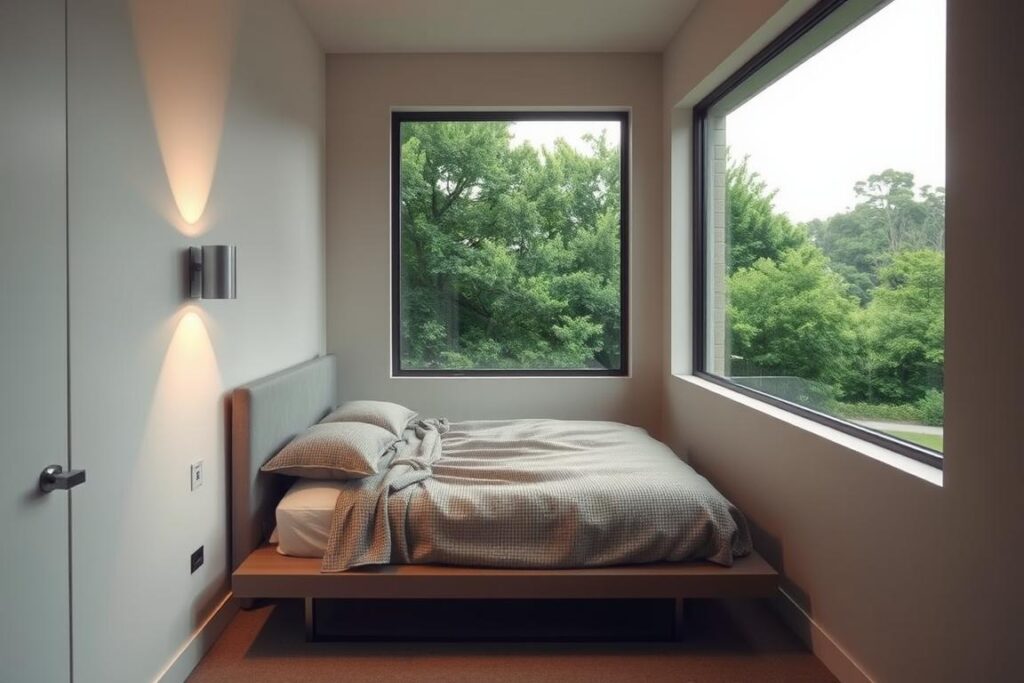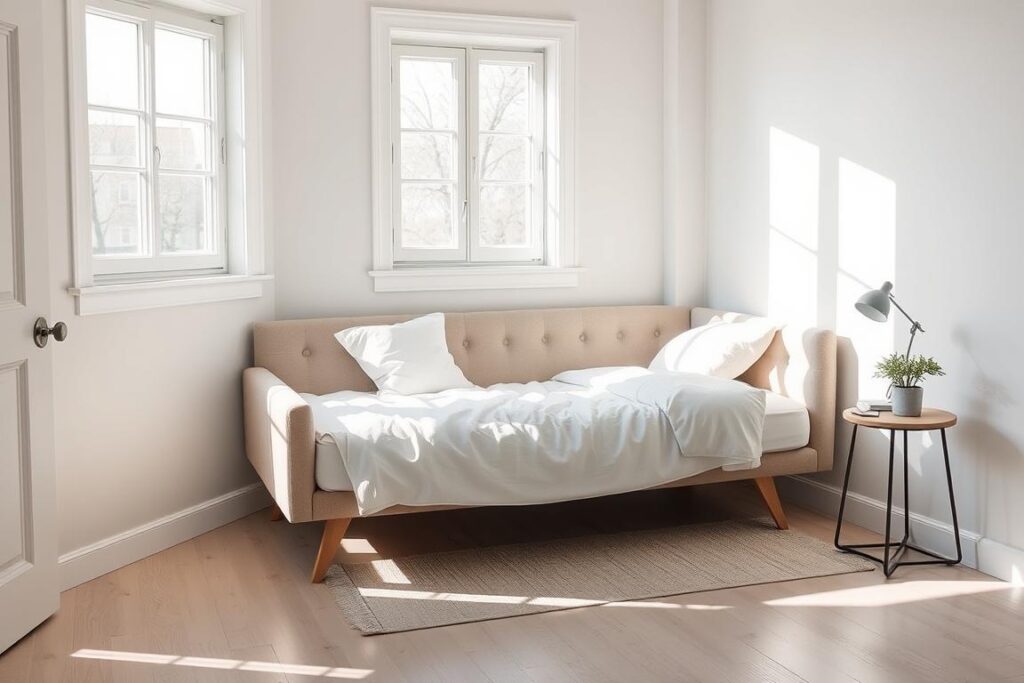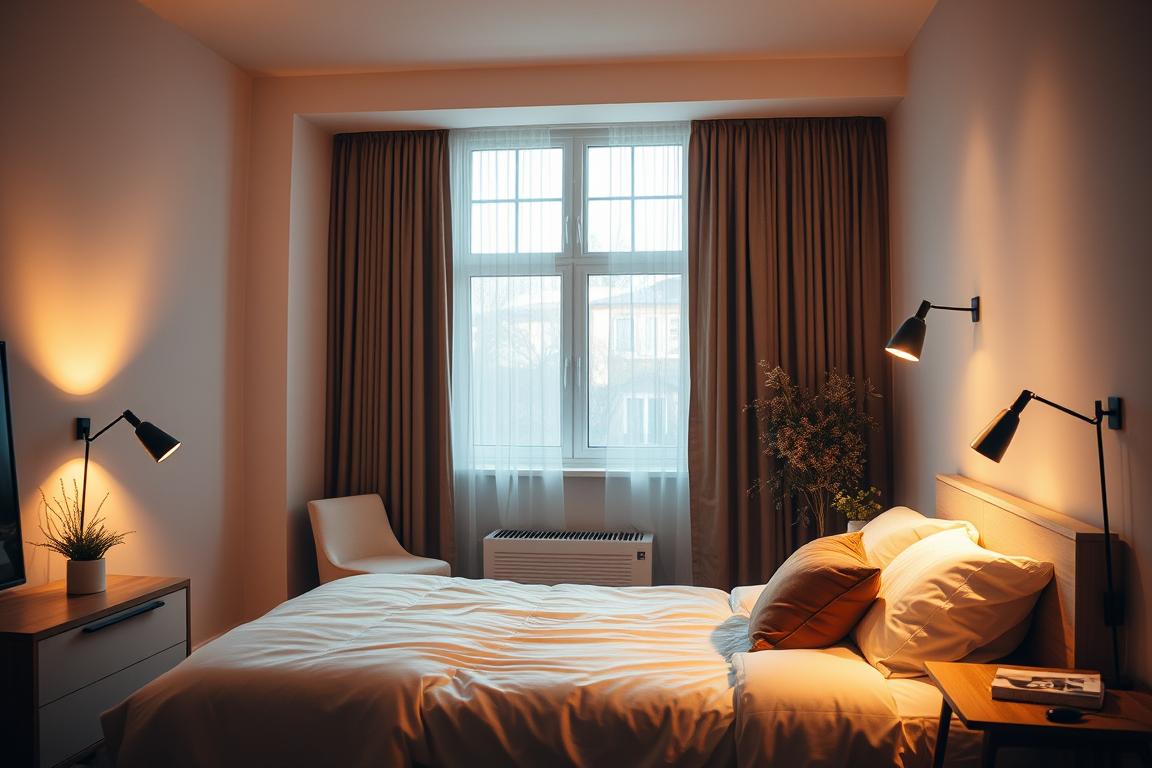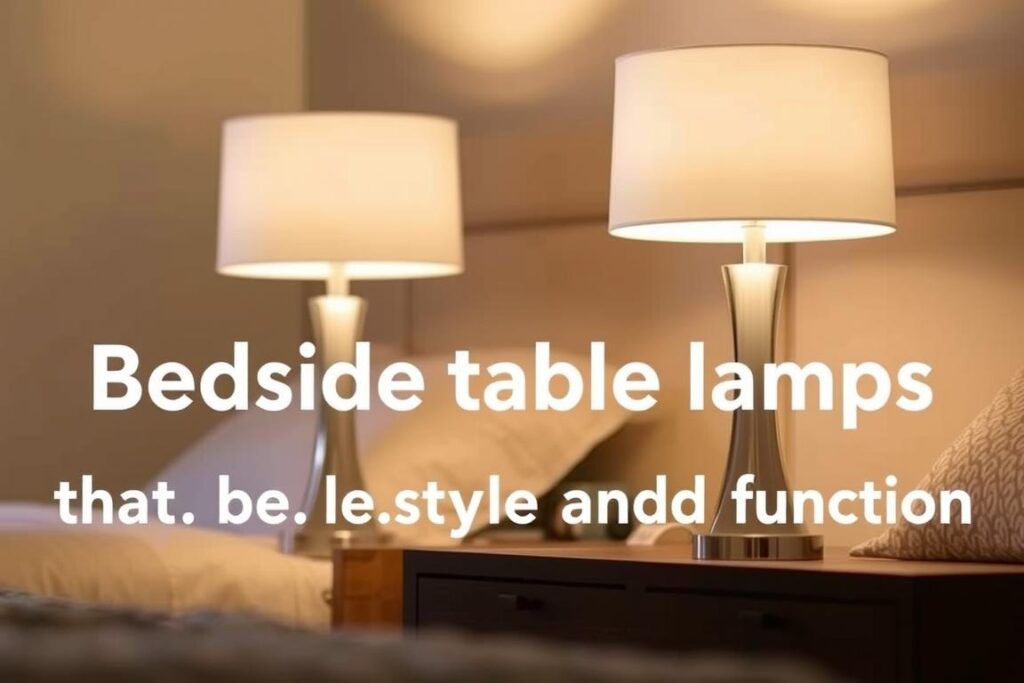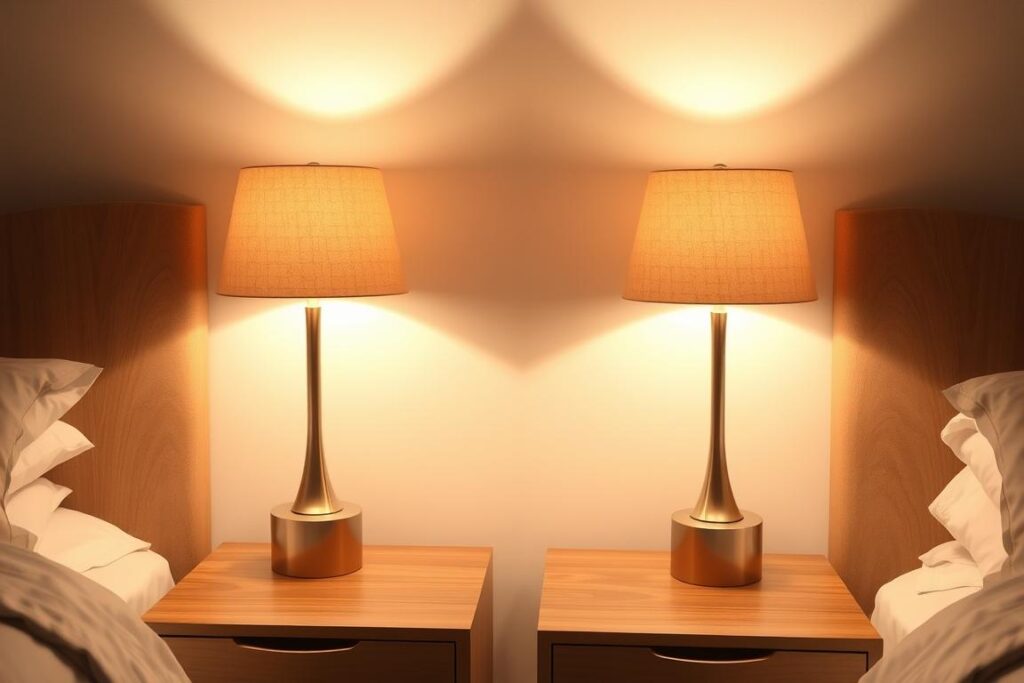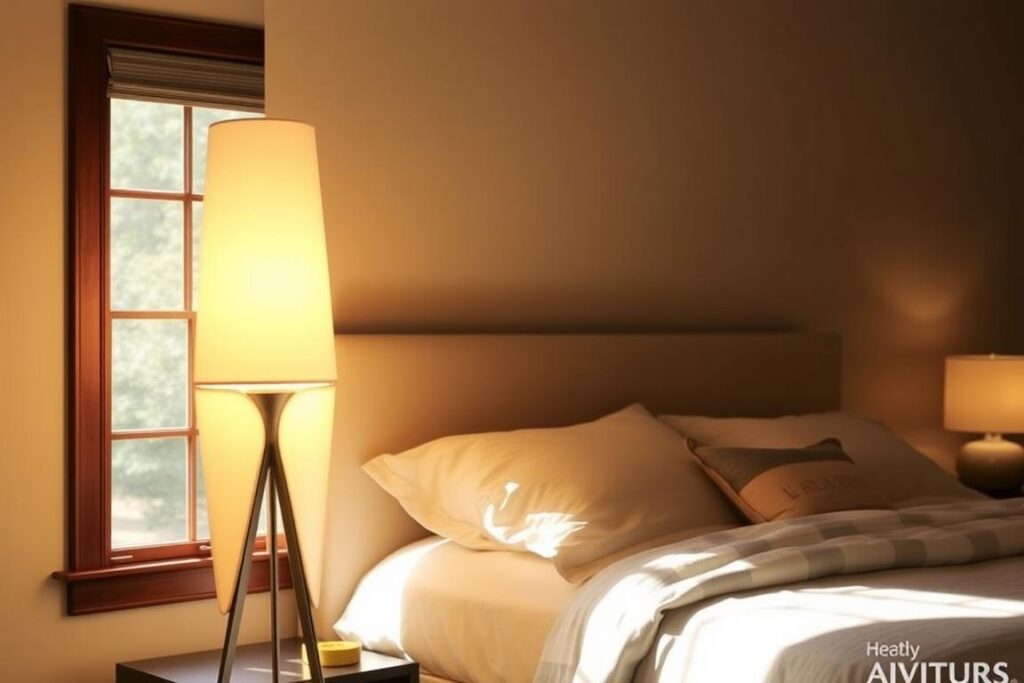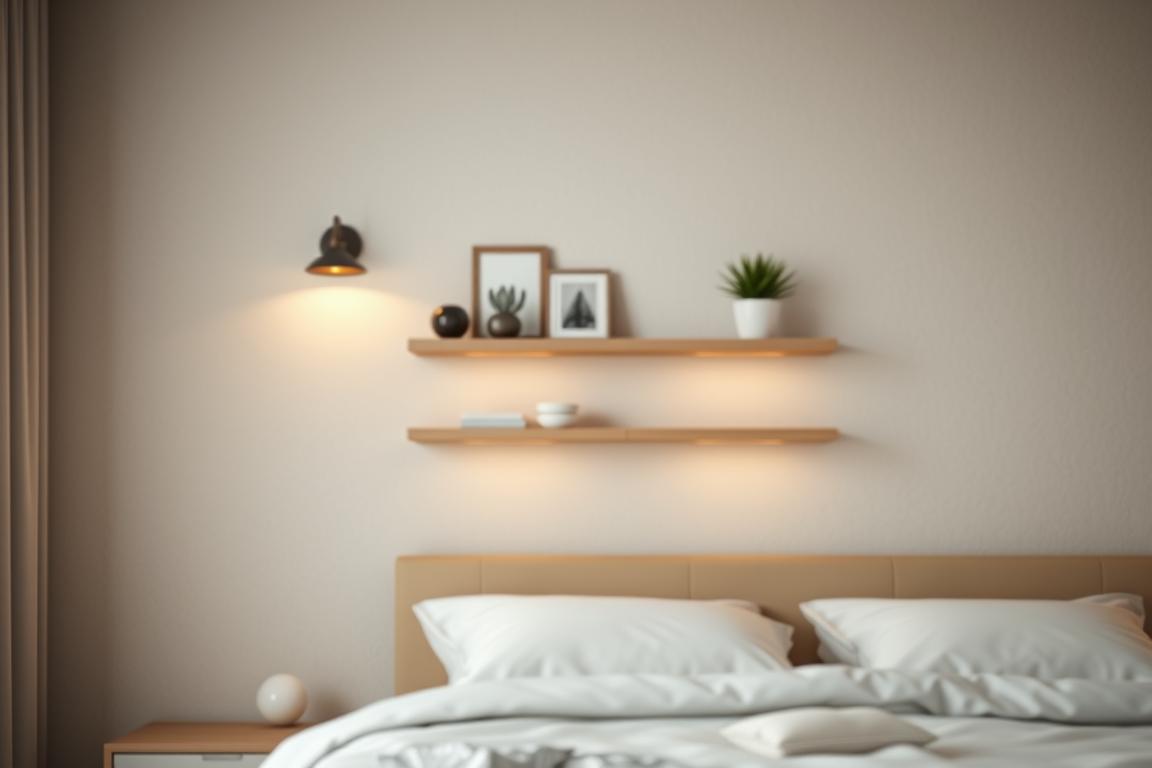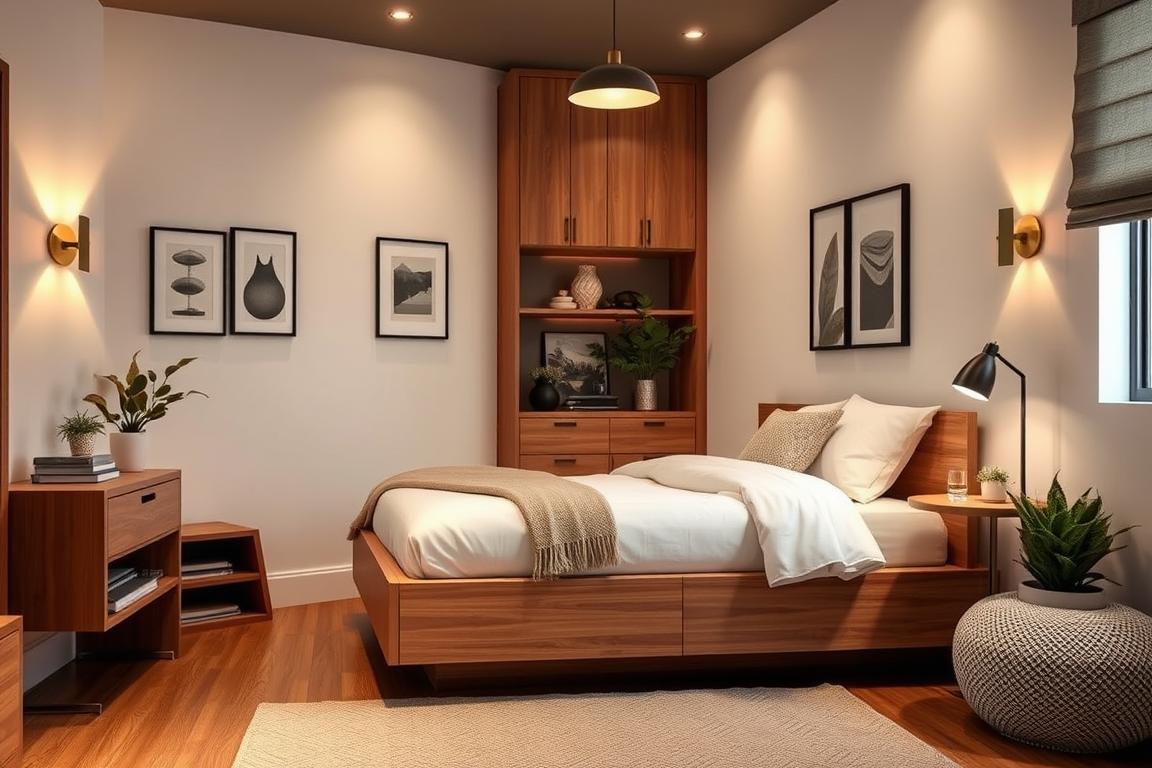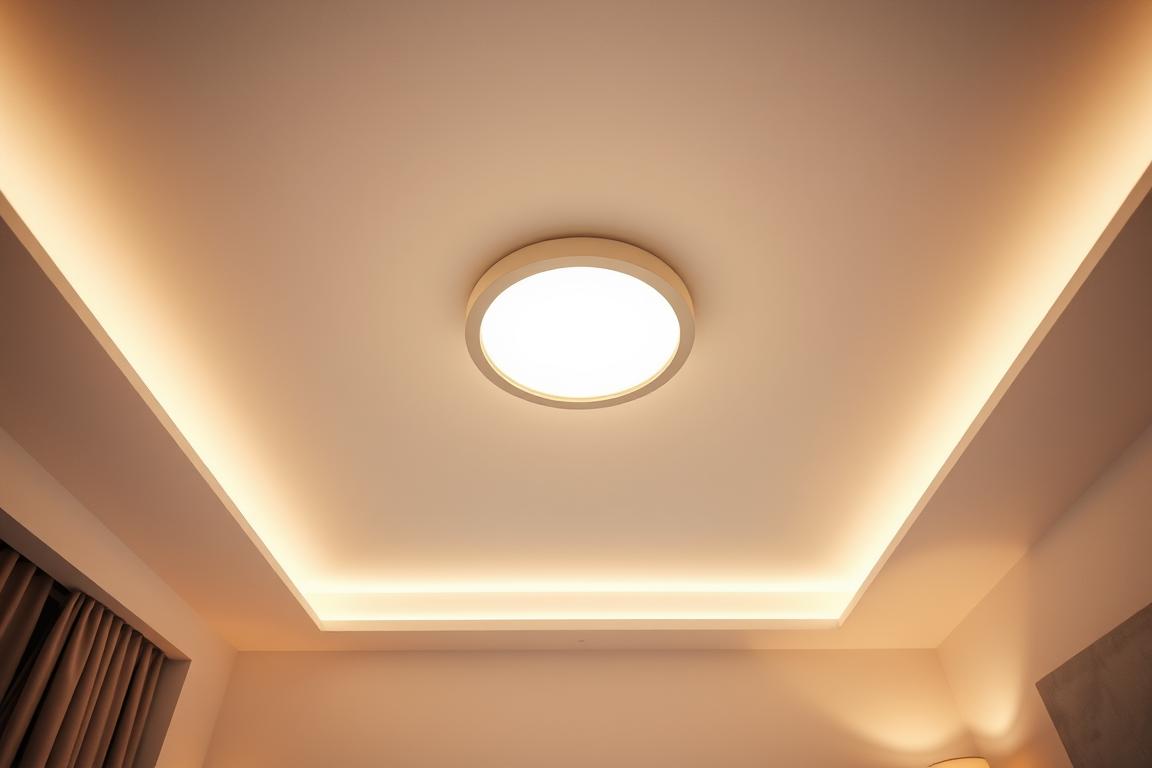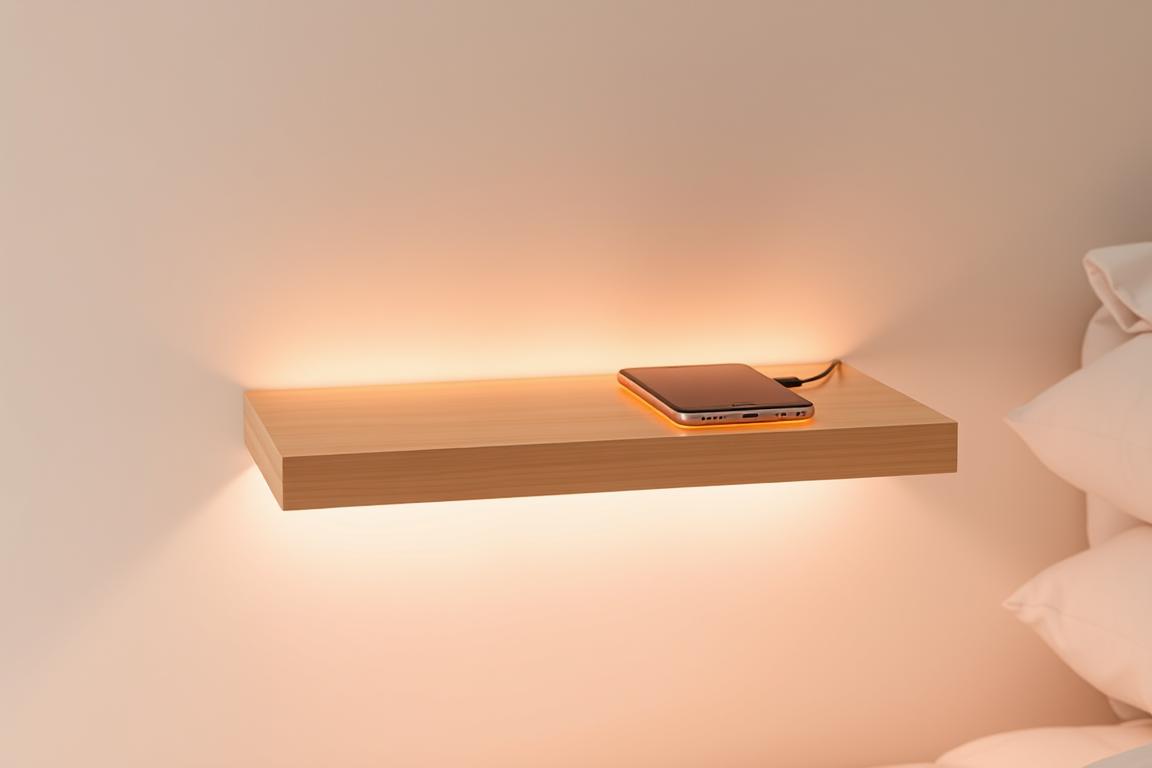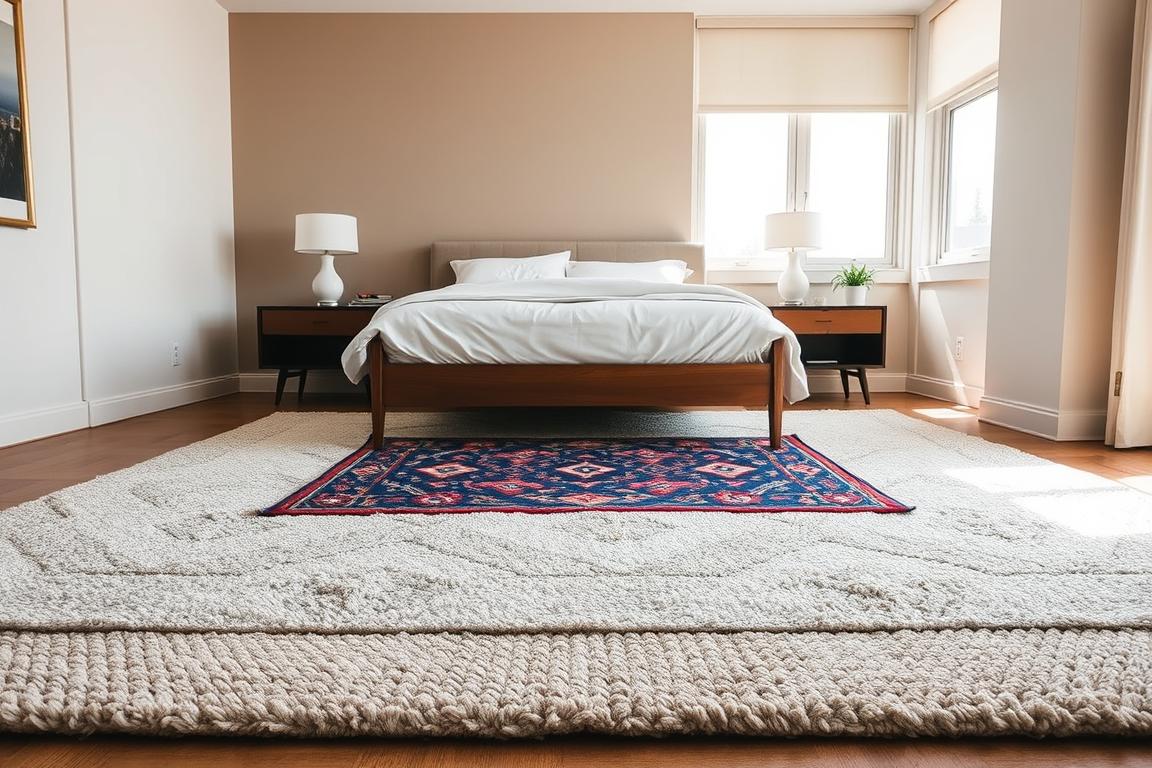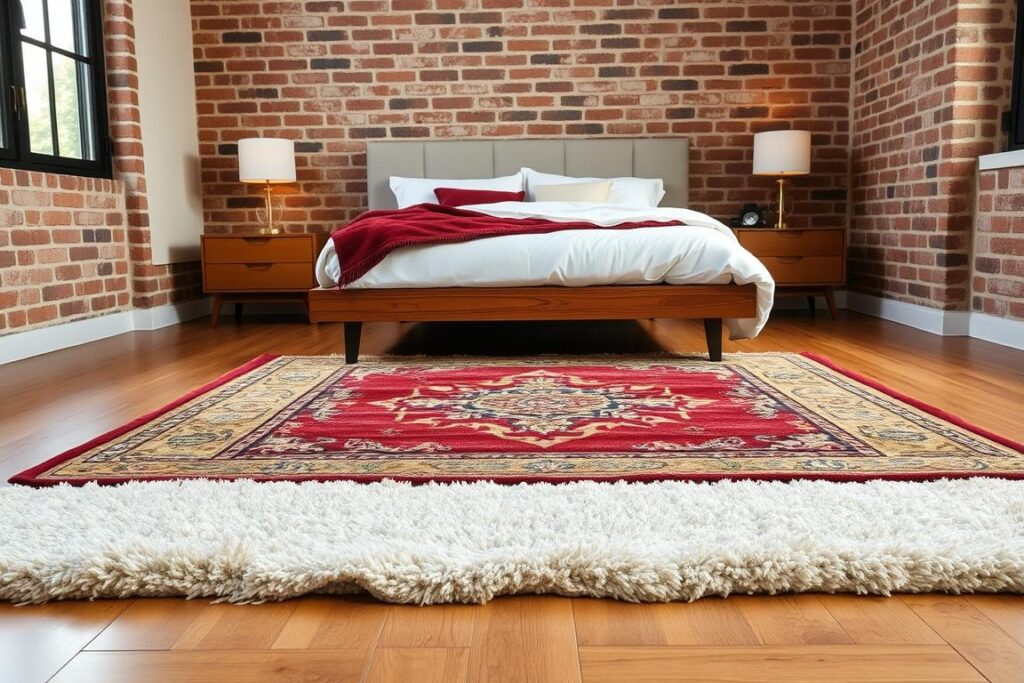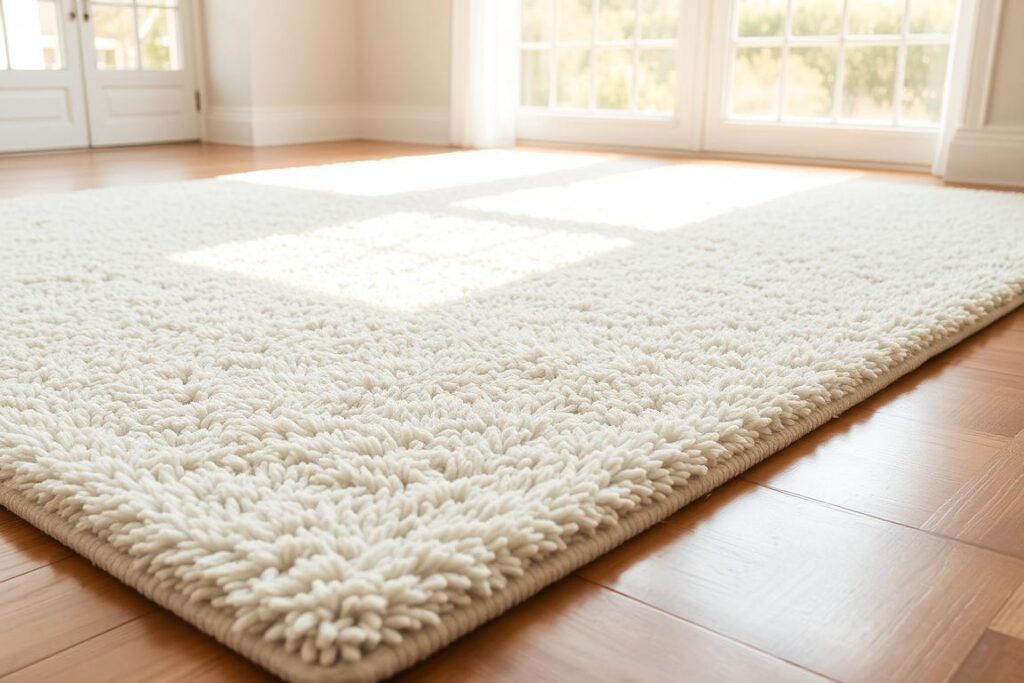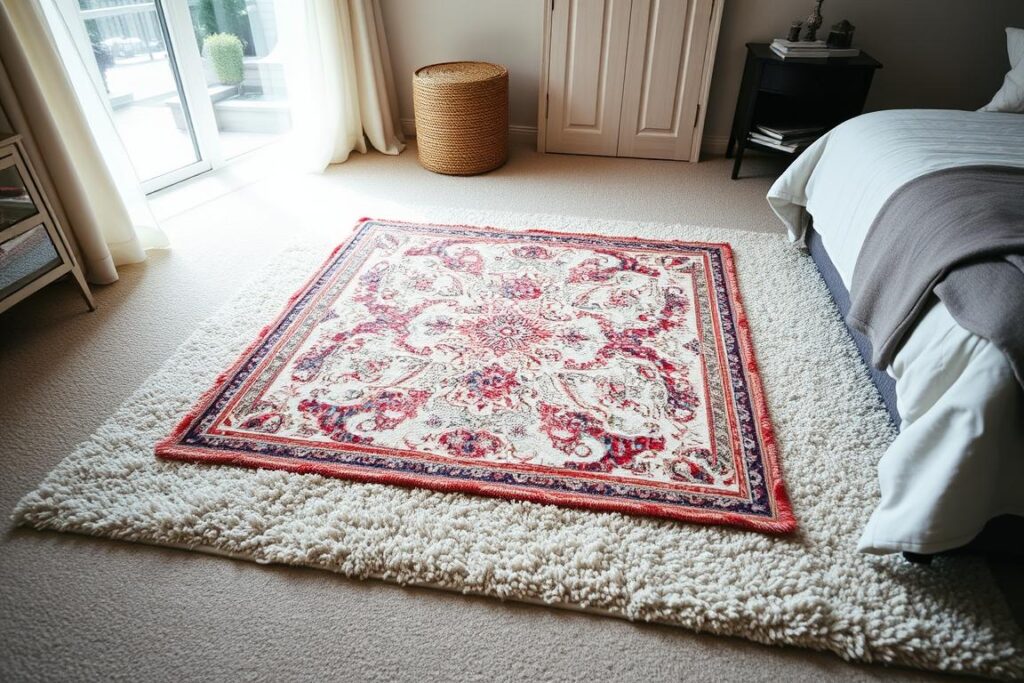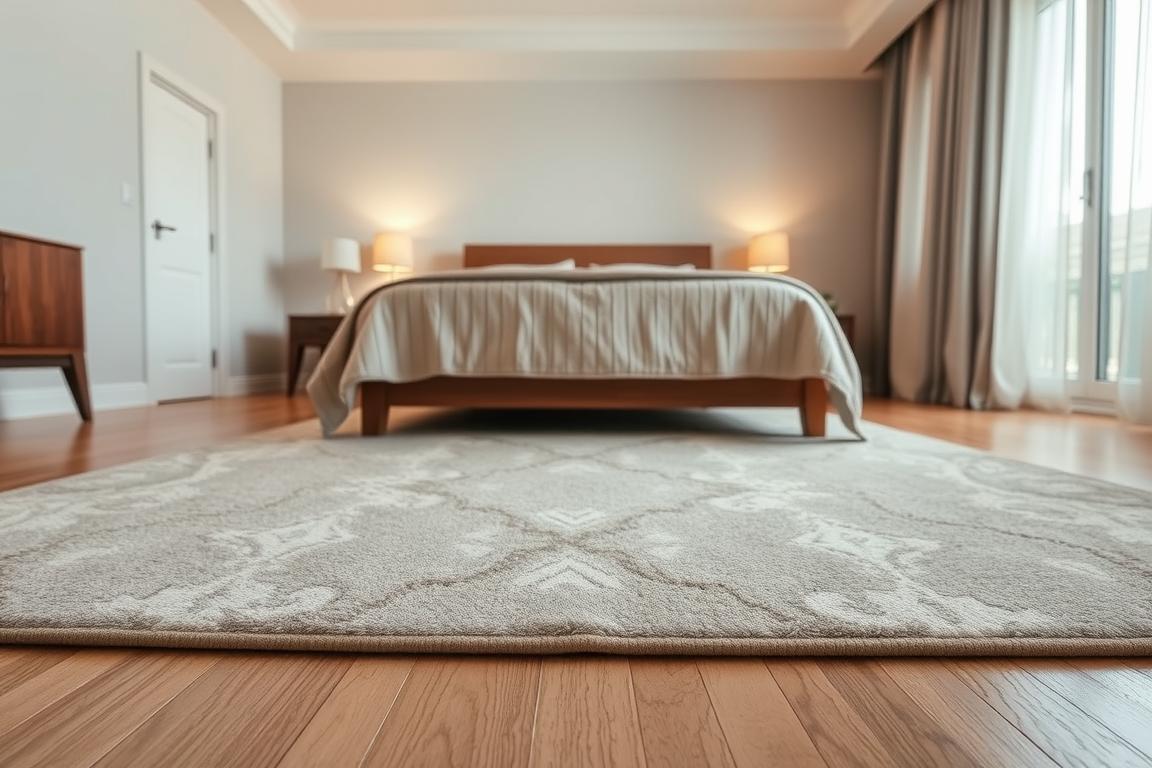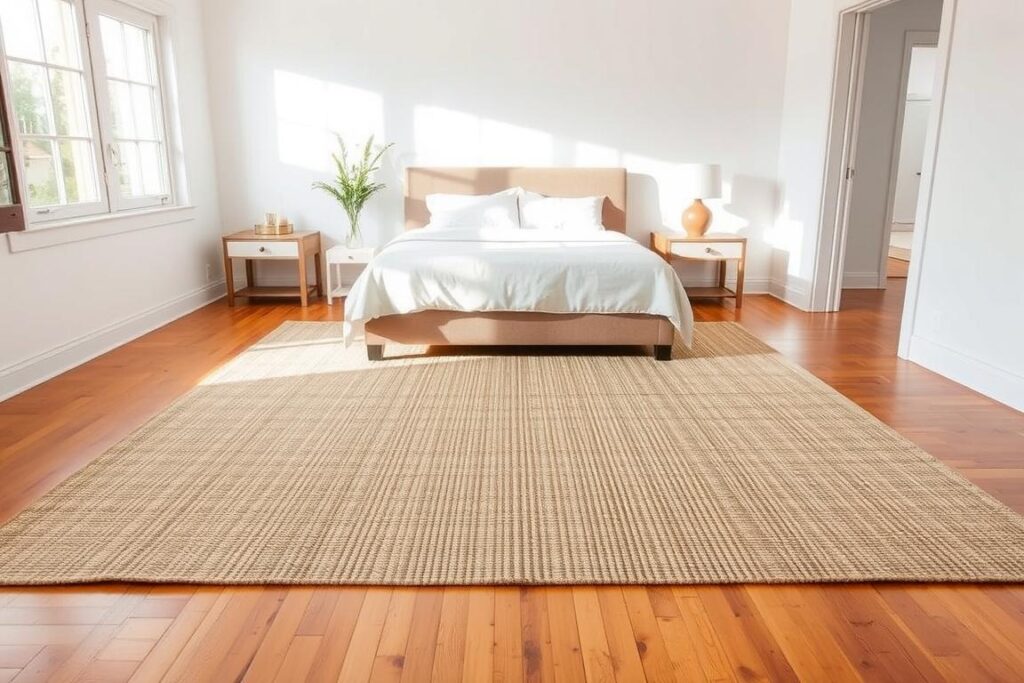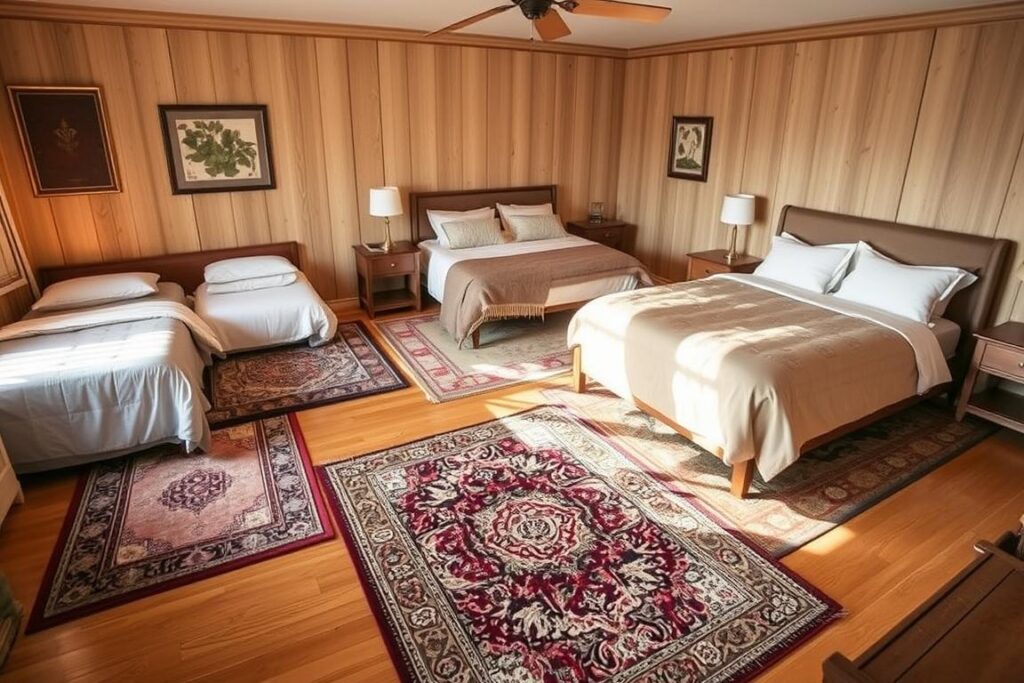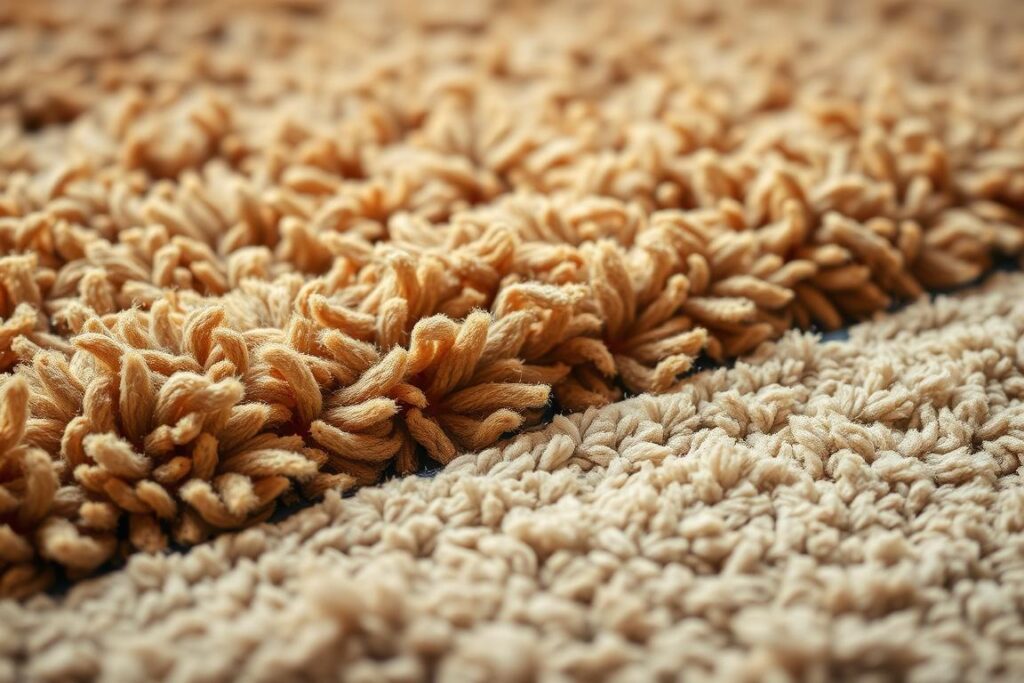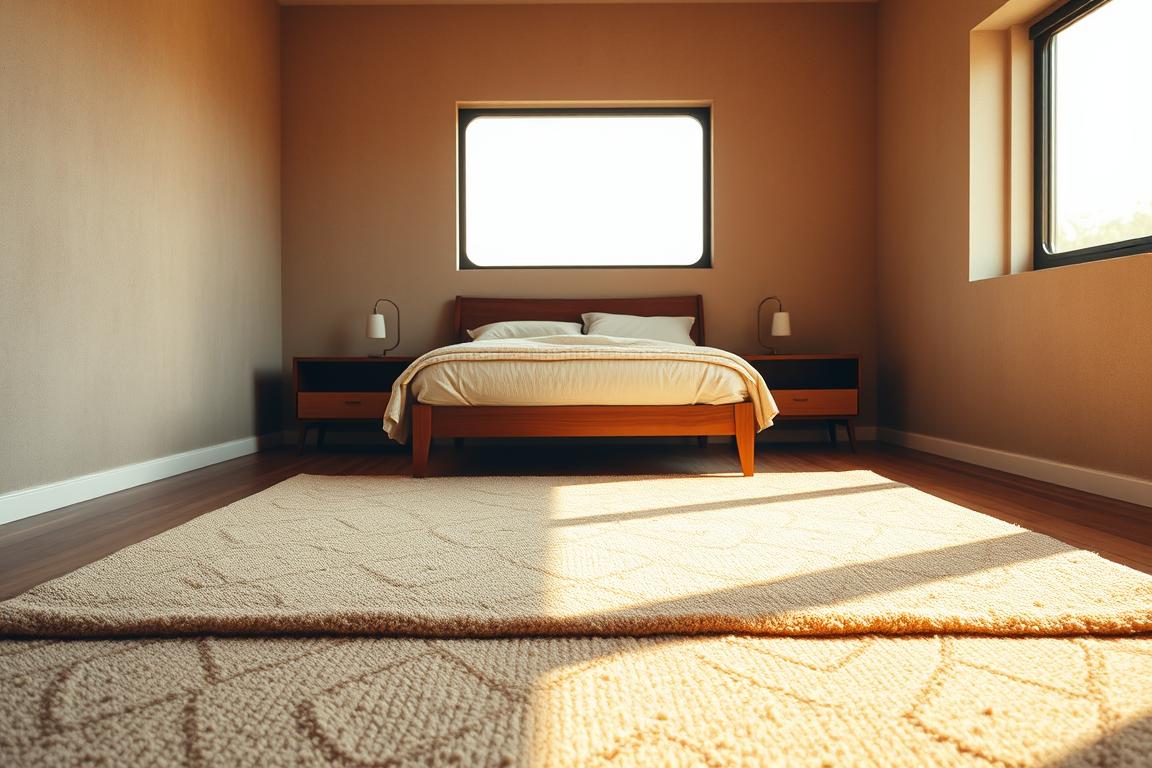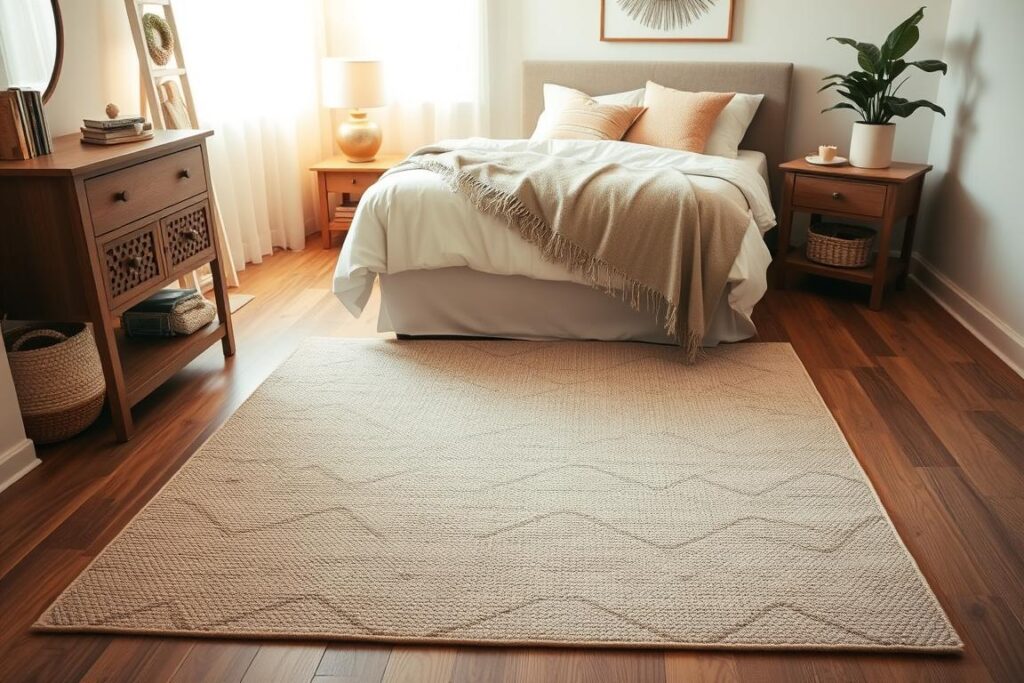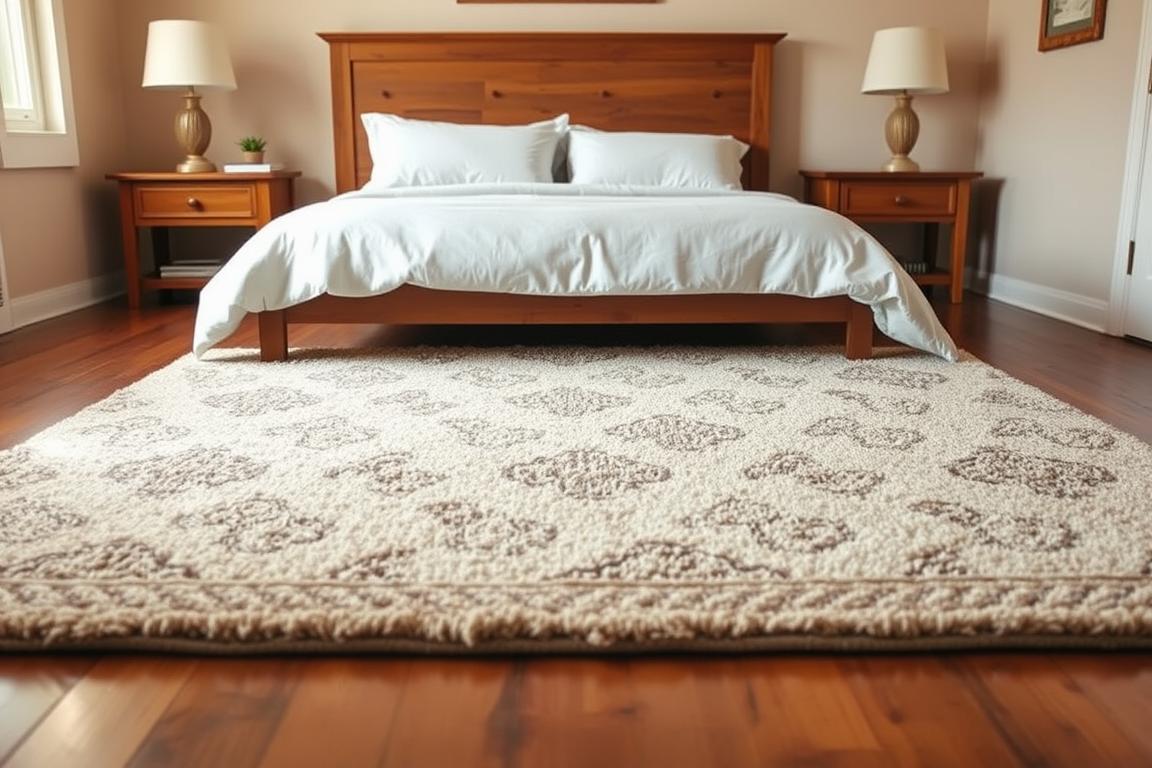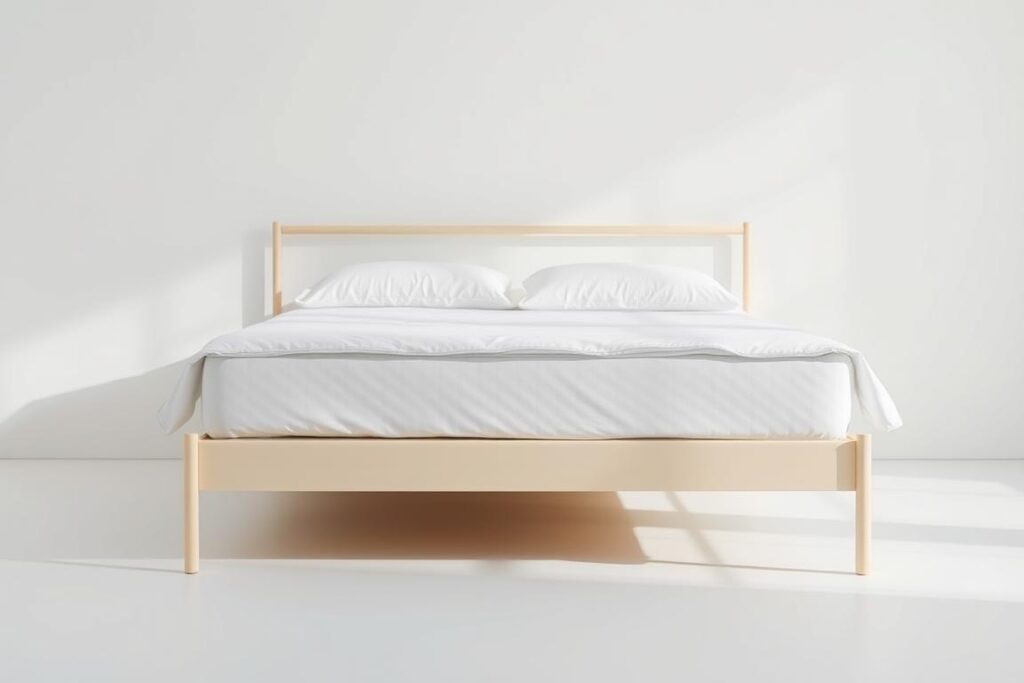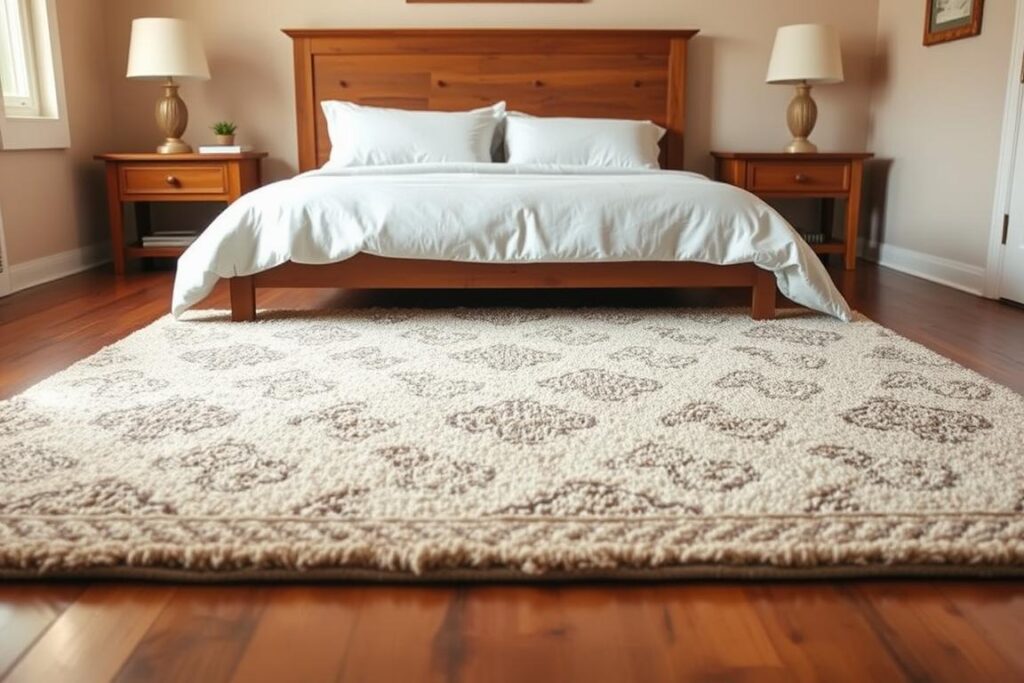Christmas is the perfect time to transform your bedroom into a warm, inviting retreat. A cozy Christmas bedroom isn’t just about décor—it’s about creating a space that feels peaceful, comforting, and full of holiday magic. By using festive colors, layered textures, soft lighting, and thoughtful decorative pieces, you can design a warm holiday room décor style that turns your bedroom into your favorite winter sanctuary.
In this guide, you’ll learn how to build a beautiful Christmas bedroom décor plan step-by-step, using simple styling techniques that make your space feel luxurious, festive, and incredibly cozy.
Start With a Festive Color Palette (Foundation of Christmas Bedroom Décor)
The color palette you choose sets the emotional tone of your Christmas bedroom. Whether you’re going bold or subtle, selecting the right colors ensures your décor feels cohesive and intentional.
Classic Holiday Palette: Red, Green & White
These timeless Christmas colors bring instant warmth. Use red throw blankets, green accent pillows, and white bedding to anchor the look. This palette works beautifully in traditional homes and rustic, cabin-style bedrooms.
Modern Cozy Palette: Creams, Golds & Winter Neutrals
For a softer aesthetic, use creamy whites, champagne golds, caramel, taupe, and soft beige. This palette creates a calm, elegant winter retreat without overwhelming the space.
Scandinavian-Inspired Minimal Christmas Bedroom Décor
If you want a clean and modern style, Scandinavian décor works perfectly.
Think:
- White bedding
- Light wood tones
- Subtle greenery
- Minimalist garlands
This palette gives your bedroom a peaceful, winter-morning feel.
Layer Bedding for Maximum Comfort and Holiday Warmth
A cozy Christmas bedroom starts with bedding that feels soft, warm, and inviting.
Start With Soft Base Layers (Sheets + Comforter)
Choose breathable cotton, warm flannel, or brushed microfiber sheets. These materials keep you comfortable in cold weather and help regulate temperature.
Add Holiday-Themed Throws and Textures
Throw blankets instantly add seasonal warmth. Look for textures like:
- Chunky knit
- Sherpa
- Faux fur
- Woven wool
These materials bring visual depth and tactile comfort.
Pillows That Create a Cozy Christmas Bedroom
Decorative pillows are one of the easiest ways to introduce holiday color and personality. Mix and match patterns like:
- Plaid
- Snowflakes
- Cable-knit designs
- Winter forests
Many shoppers prefer switching out their usual pillows for holiday-themed covers during December. These covers are inexpensive, easy to store, and instantly refresh a bedroom without needing to buy full pillow sets—perfect for maximizing holiday style on a budget.
Add Christmas Bedroom Décor That Sets the Mood
Décor pieces add charm and personality to your holiday bedroom. The goal is to enhance the look without making the space feel cluttered.
Mini Trees, Garlands & Festive Shelf Accents
Small tabletop Christmas trees, pine garlands, and miniature figurines make your room feel more seasonal without taking up space.
Place them on:
- Nightstands
- Dressers
- Floating shelves
Subtle Décor for Small Bedrooms
If your room is small, choose slim decorative pieces like wall hangings, framed holiday prints, or simple wreaths. This keeps the space festive without crowding it.
Warm Lighting for a Holiday Glow
Lighting is essential for creating mood. Use warm white lighting to enhance the cozy ambiance.
Options include:
- Soft bedside lamps
- String lights
- Battery-powered candles
- Lantern-style nightlights
Warm lighting transforms your room into a relaxing winter haven.
Use Textures That Make the Room Feel Warm and Inviting
Textures are the secret to a truly cozy Christmas bedroom. They add dimension, comfort, and warmth.
Faux Fur & Sherpa Accents
These plush materials instantly make your space feel luxurious. Add them through throw blankets or pillow covers.
Knitted Throws and Winter Fabrics
Cable-knit throws and wool blankets create a classic winter aesthetic. They’re great layering pieces that make your bed look fuller and more inviting.
Layered Rugs for Seasonal Comfort
Placing a soft rug under or beside your bed adds warmth to cold floors. Look for shag, high-pile, or braided rugs for a winter-ready look.
Add Scents, Sounds & Finishing Touches for a Cozy Holiday Experience
A holiday bedroom should appeal to all the senses—not just the eyes.
Holiday Scents (Pine, Vanilla, Cinnamon)
Use candles, diffusers, or room sprays with warm seasonal fragrances.
Popular choices include:
- Balsam fir
- Vanilla sugar
- Cinnamon nutmeg
- Winter berry
Soft Christmas Music or Ambient Winter Sounds
Play soft Christmas instrumentals or winter soundscapes to set a calm mood at night.
Décor Placement Tips for a Balanced Look
- Keep surfaces tidy
- Focus on symmetry
- Cluster décor instead of spreading it randomly
- Use soft color transitions
These details create a polished, styled appearance.
Simple Ways to Create a Warm Holiday Room Décor on a Budget
You don’t need an expensive makeover to style a cozy Christmas bedroom.
Affordable Bedding Upgrades
Swap your duvet cover or add holiday pillowcases. These simple changes make a big visual impact.
DIY Christmas Bedroom Décor
Try crafting:
- Homemade garlands
- Printable wall art
- Hand-sewn pillow covers
- Mason jar candle holders
Multi-Use Décor Items That Last Beyond December
Neutral winter pieces—like faux fur throws or beige knit blankets—transition easily into January and February décor.
Quick Style Guide — What Makes a Bedroom Feel Cozy at Christmas?
Checklist:
- Soft holiday bedding
- Layered throws and pillows
- Warm, low lighting
- Simple greenery
- Seasonal scents
- Neutral + festive color mix
- Winter textures (knit, fleece, sherpa)
This quick guide helps you instantly evaluate your décor.
FAQs
How do I make my bedroom cozy for Christmas?
Use warm bedding, festive colors, soft lighting, and a few holiday décor pieces like garlands or mini trees.
What is the best color scheme for a Christmas bedroom?
Choose either classic red and green or softer palettes like cream, gold, and winter neutrals.
How do I decorate a small room for Christmas?
Use minimal décor such as wall art, slim garlands, soft lighting, and small accent pieces.
How do I create warm holiday room décor on a budget?
Update bedding, add inexpensive décor, use DIY crafts, or layer soft blankets and pillows.
Conclusion
Your bedroom should feel like a calm, joyful sanctuary during the holiday season. With the right color palette, soft textures, cozy bedding layers, and thoughtful décor accents, you can easily create a warm holiday room décor style that feels festive without overwhelming your space. Even small updates—like layered throws or soft lighting—can completely transform your bedroom into a cozy Christmas retreat.
If you want more inspiration, ideas, and seasonal bedding guides, Cozy Bed Quarters is your go-to place for creating comfort during every season.

